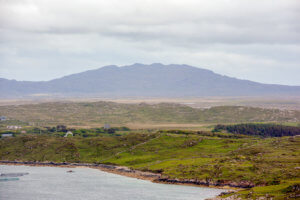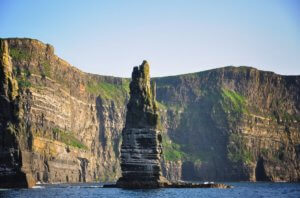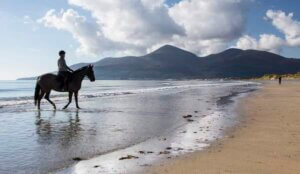Are you looking for activities to enjoy in Ireland?
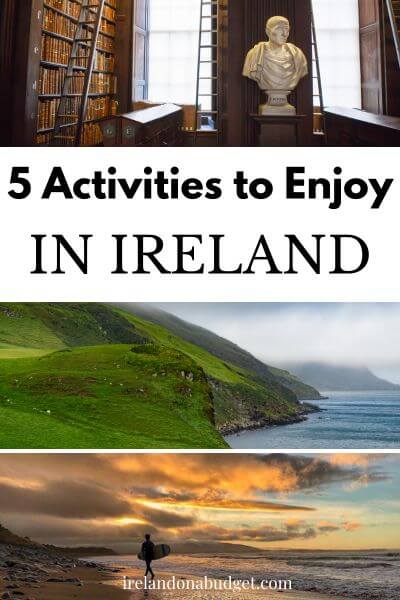 This post and page contain affiliate links and I may earn compensation when you click on the links at no additional cost to you.
This post and page contain affiliate links and I may earn compensation when you click on the links at no additional cost to you.
Despite its size, there’s a lot to see in Ireland.
From the Wild Atlantic Way that stretches 2,500 kilometers (that’s just over 1,500 miles) from Malin Head in Co. Donegal, to County Cork’s Haven Coast, to the multicultural capital Dublin on the East Coast.
For first-time visitors, taking it all in might seem overwhelming.
That’s why it’s a good idea to plan your trip based on your interests.
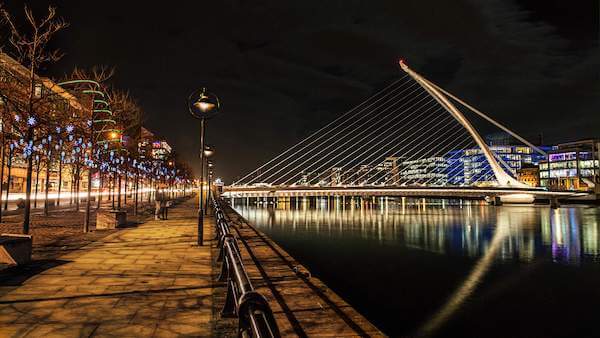
Do you want to stay in the capital city or would you rather explore Ireland’s many iconic attractions, including its castles and other ancient monuments?
If you don't want to drive on the left, then tours by bus or train may be more appropriate for you.
There are a number of tours you can take from Dublin.
Plus, the Irish landscape is ideal for walking and cycling, and there are tours for that as well.
Below are five activities to enjoy in Ireland that will get you excited about your upcoming journey to the Emerald Isle.
Trinity College and the Book of Kells, Dublin
If it's the Irish culture you’re looking for, go no further than Trinity College and the Book of Kells.
The university is home to what has become Ireland’s greatest national treasure, the Book of Kells. It is an illuminated book in Latin containing the four gospels of the New Testament.
Walk the cobbled courtyards of Trinity College, founded in 1592 by Queen Elizabeth I, and then take either a guided or self-guided Trinity Trails tour.

From there, proceed upstairs to the impressive Long Room, the world’s most distinguished library housing 200,000 books in oak bookcases.
The Book of Kells exhibition is open 7 days a week. From October 2023, it will be housed in the Trinity College
Admission is €18.50 for adults, €46 for a family of 4 (children 17 and under), and €15 for students and seniors age 60 and over.
The Causeway Coastal Route
Switching gears and heading on up to Northern Ireland, the Giants Causeway, located along the popular Causeway Coastal Route, is absolutely mesmerizing.
It is among some of the best activities to enjoy in Ireland.
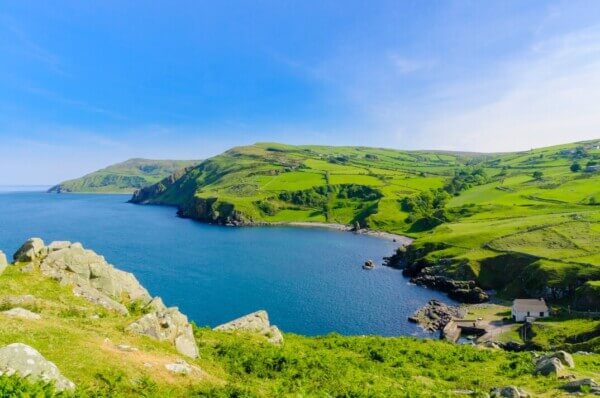
The Causeway itself is a major tourist attraction that is run by the National Trust.
It is an area of about 40,000 interlocking basalt columns, the result of a volcanic fissure eruption that happened millions of years ago.
You’ll want to be careful climbing from one rock to another, so wear the proper footwear.
There are a few different walking trails to choose from in the surrounding area, depending on one’s fitness level.
They include:
- The Blue Trail, an easy walk that will take about 25 minutes.
- The Red Trail, a moderate, sometimes uphill, walk that can take up to an hour and a half to complete and
- The Green Trail, a 2-mile cliff-top walk, with views of the Inishowen Peninsula, and even Scotland, from the top.
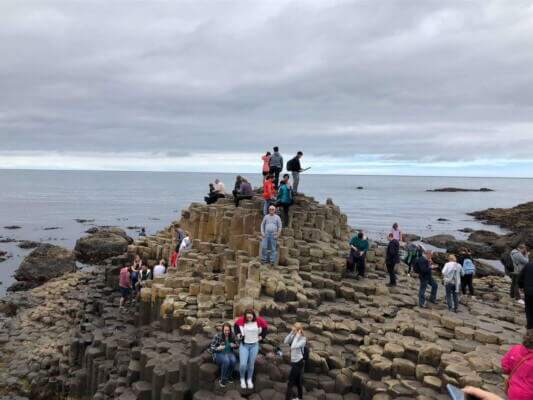
You can also try these easy Coastal Causeway walks.
Admission to the Giant’s Causeway is in British Sterling – £15 for adults, £7.50 for a child, or for a family, the price is £37.50.
If you pre-purchase online, you’ll save £1.50 on adult admission, 75p on a child’s admission, and £3.75 on a family admission ticket.
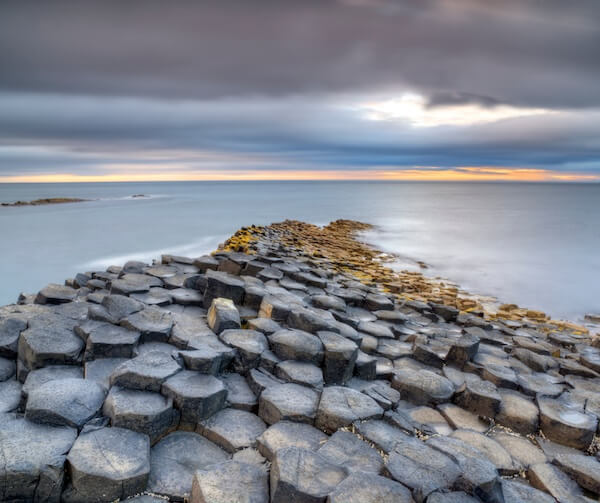
Those same discounts are available to visitors who arrive at the Causeway by public transportation, bike, or on foot.
Note that you do not have to pay to see the attraction itself.
These prices are for the guided tour only, which comes with headphones. Those who come to the Giant's Causeway for free are discouraged from parking in the nearby parking lot, however.
From the Giant’s Causeway, drive along the beautiful Causeway Coastal Route (from Belfast to Derry) to uncover more gems.
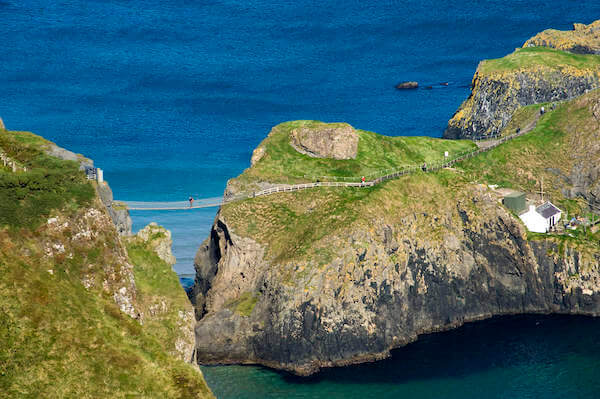
They include:
-
- The Gobbins Cliff Walk on the Antrim coast includes a tubular bridge 33 feet (10 meters) above the sea.
- The Cushendun Caves, a location from the popular “Game of Thrones” series.
- The Carrick-a-Rede Rope Bridge links the tiny Carrick Island with the Antrim coastline.
- The Bushmills Distillery and
- The 14th-century Dunluce Castle, which is perched high above the North Atlantic.
Read More: A Self-Guided Tour of Northern Ireland's Famous Game of Thrones Attractions
Surfing in the Northwest
If you’re looking for an exhilarating, adrenaline-fueled activity during your stay in Ireland, there are many opportunities for surfing.
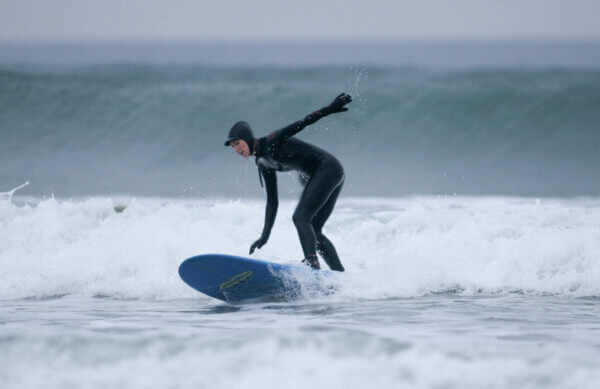
Several beaches in Counties Sligo and Donegal are ideal for either the novice or the experienced surfer.
Surfing in Easkey is more suitable for the experienced surfer because of the more powerful reef breaks that are common in this area.
Enniscrone, a few miles to the north, and Strandhill, which lies in the other direction, are locations that offer surf lessons.
County Donegal has its fair share of surf-friendly beaches.
They include Bundoran, Tullen Strand, Rossnowlagh, and for the experienced surfer, Inishowen, Fanad Head, Dunfanaghy, Bloody Foreland, and Dungloe.
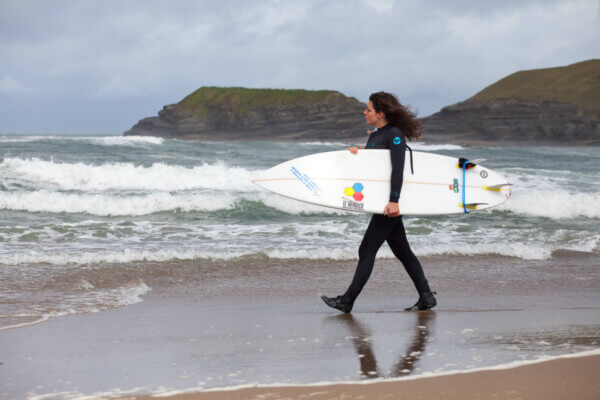
Some surf schools to check out when you’re traveling in the northwest include the 7th Wave Surf School, the Strandhill Surf School, and the Bundoran Surf Co.
Traditional Irish Music Session, Doolin, Co. Clare
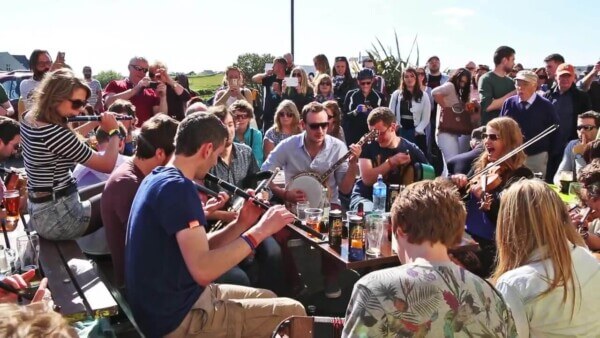
If there’s one place where you’re guaranteed to hear some of the best Irish music on the island of Ireland, it’s in the little village of Doolin in County Clare.
Despite its remote location (it's about 26 miles/42 kilometers from Ennis and about 43 miles/70 kilometers from Galway city), Doolin is a bustling little village.
You can find events and festivals in Doolin throughout the year.
What you’ll enjoy most are the traditional Irish music sessions that take place in its popular pubs.
They include Fitzpatrick’s, O'Connor's, McGann’s, and McDermott’s.
It is hands-down one of the more popular activities to enjoy in Ireland.
Fota House, Arboretum & Gardens, Fota Island, Co. Cork
Undoubtedly the warmest spot in all of Ireland, Fota Island lies within Cork Harbor. It contains Fota House Arboretum & Gardens a resort and a wildlife park.
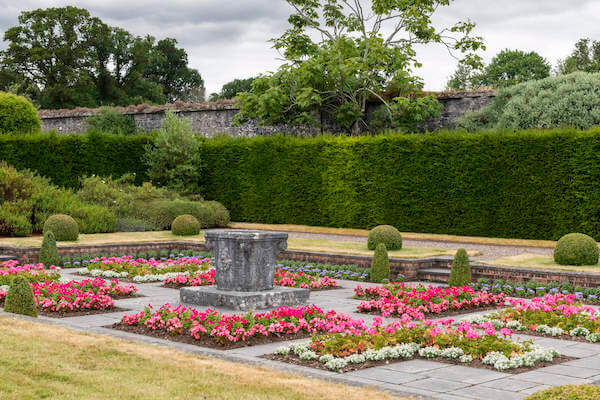
Fota House was the former home of the Smith-Barry family, otherwise known as the Earls of Barrymore. The house is beautifully maintained by the Irish Heritage Trust.
What You'll See at Fota House
The house includes a number of principal rooms, a Victorian nursery, and the service wing, where the cooks, butlers, footmen, and maids of Fota House spent much of their time.
The paintings you’ll see at Fota House are considered the finest collection in the country outside of the National Gallery of Ireland.
Visitors can also see the estate’s Victorian Working Garden, which includes an orchard, pit houses, and in-use glasshouses.

The house is open from March through September, 10 a.m. to 5 p.m., 7 days a week.
Have you come across any cost-conscious activities in Ireland that are not mentioned in this post?
Let me know in the comments, and if you're interested in getting tips and tricks on getting to Ireland on a budget, feel free to sign up for my regular e-newsletter.

